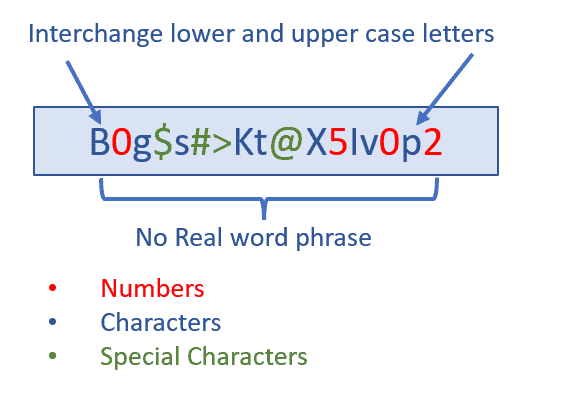1. Introduction
A wireless network’s service set identifiers (SSIDs) provide a distinctive name that distinguishes the network from other wireless networks, whereas passwords control access to resources.
In this tutorial, we’ll discuss the workings of SSIDs and passwords, their capabilities, and differences.
2. Why Do We Need the Standards for SSIDs and Passwords?
First of all, standards guarantee that devices are uniform and interoperable.
Let’s consider what would happen if each device maker had their SSID and password procedures. The lack of standardization would create a chaotic environment where users would struggle to connect gadgets from various manufacturers.
For example, a printer that automatically connects to a network with a standardized SSID format won’t recognize a network with a non-standard name, resulting in unnecessary complexity and customer dissatisfaction.
Furthermore, SSID and password standards improve security. With a clear set of rules, it becomes increasingly difficult for malevolent groups to exploit vulnerabilities.
For instance, a standard requiring a minimum password length and complexity can prevent brute-force attacks from gaining unauthorized access.
3. How to Define a Valid SSID?
A Wi-Fi network’s basic identification is its SSID, and it’s effectively the network’s name:

The access point broadcasts the SSID during the setup process, enabling nearby devices to recognize and establish a connection with the correct network.
In places where several networks may overlap, the SSID must be distinct to prevent confusion with other networks.
The SSID must be managed correctly and with a strong password to prevent unwanted access and ensure network security. A wireless network’s security and efficiency depend on defining the right SSID.
While defining a valid SSID, the SSID character composition and length should be considered. We can create an SSID up to 32 characters long, allowing lowercase and uppercase letters, numerals, spaces, underscores, periods, and dashes.
Further, we should not use personal information and easy-to-guess names.
3.1. What Are Common SSID Configuration Practices?
Configuring an SSID requires us to:
- use a unique SSID to prevent attackers from targeting common names
- provide an easily recognizable SSID that is not individually identifiable
- use a single SSID for both bands (2.4 GHz and 5 GHz) to improve user experience and management
- and implement a guest policy with a distinct SSID to ensure network security
Beyond a Wi-Fi network’s name, there are a few important practices to consider for maximum security and performance, such as using strong passwords and enabling network encryption.
3.2. Industry and Regulatory Guidelines for SSID
The National Institute of Standards and Technology (NIST) offers extensive guidelines for designing secure wireless networks and monitoring the lifecycle of network components.
The guidelines recommend securing a wireless network with strong access controls, efficient configuration management, and frequent risk assessments.
The first step in wireless network design is to evaluate the requirements based on the applications that will be used and the sensitive nature of the data that will be exchanged.
Next, we should choose a distributed or centralized architecture and ensure it complies with all security requirements.
We should also use strict access control mechanisms, like network access control lists and WPA3 encryption, and authentication techniques, such as WPA3-Enterprise or EAP-TLS.
Furthermore, to protect from cyber threats, we should use firewalls to filter traffic, separate the wireless network from the rest of the network, and maintain the latest software and firmware versions.
Following the above recommendations can aid in keeping the environment surrounding our wireless network safe.
4. How to Secure a Password?
Creating and maintaining a strong password prevents unwanted access to confidential and business data.
Making a password secure requires adhering to industry standards, which aim to ensure strong passwords. Many elements, such as length, complexities, and randomness, contribute to a password’s strength:

4.1. Length
A strong password should contain a combination of capital and lowercase letters, digits, and symbols and be between 12 and 16 characters long. This particular length range is recommended because it balances security and memorability.
For example, an eight-character password might appear secure, but it can be broken in a few hours with today’s computational power. With 12 characters, the security is greatly improved, and passwords become computationally very hard to crack within a reasonable time frame. On the other hand, users are likely to forget too long passwords, so the limit is usually 16 characters at most.
4.2. Structure
Further, combining capital, lowercase letters, and special symbols makes a sufficiently long password hard to break because of many possible combinations. Consequently, brute-force attacks are less likely to succeed.
Lastly, we should avoid using common phrases and information that are easy to guess based on social media accounts and posts.
5. How Do Wireless Network Standards Regulate SSIDs and Password?
IEEE 802.11 standards guarantee that wireless networks follow consistent identification and access management.
As per IEEE 802.11-2020, FIPS 140-2 encryption requirements and NIST 800-53 security controls provide technical adjustments, clarifications, and improvements to the current MAC and PHY functions.
The Federal Information Processing Standards (FIPS) 140-2 provide strict guidelines for encryption techniques to safeguard sensitive data. This standard is critical in ensuring the security and integrity of information and preventing unauthorized access.
NIST Special Publication 800-53 outlines the security procedures we should strictly follow. It aims to safeguard individuals, organizations, assets, and the country from risks such as cyberattacks, natural catastrophes, and human errors.
6. Conclusion
In this article, we discussed the SSID and password standards.
SSID and password standards are necessary for maintaining a safe and user-friendly wireless networking ecosystem. By adhering to these standards, we can ensure seamless communication between diverse devices while protecting our digital infrastructure.